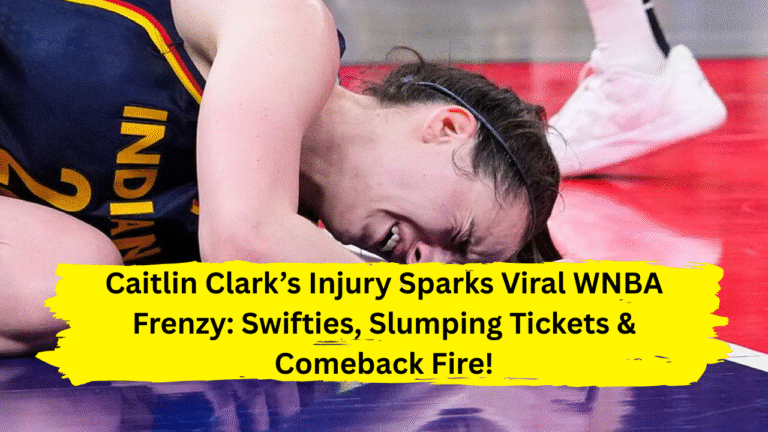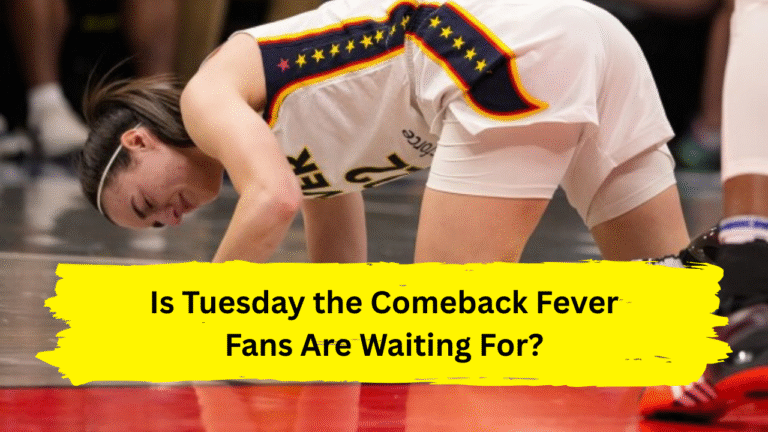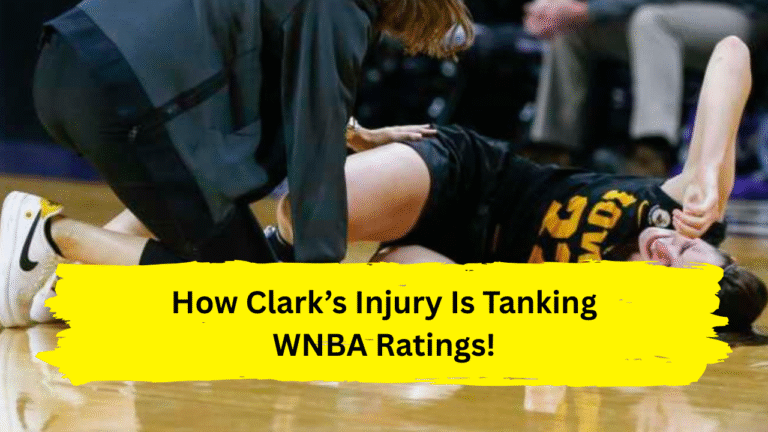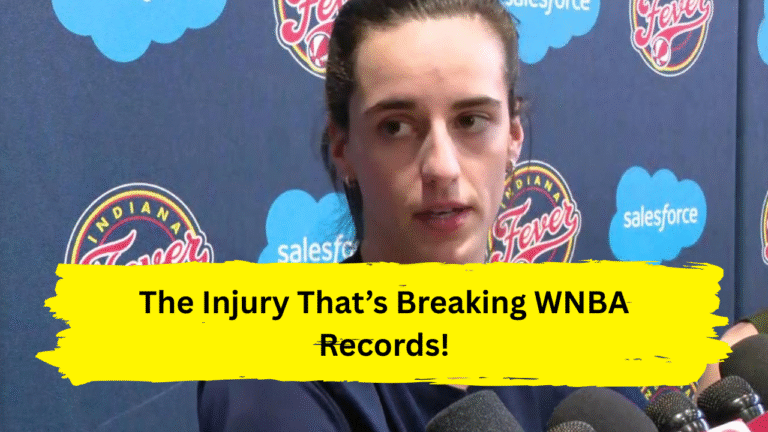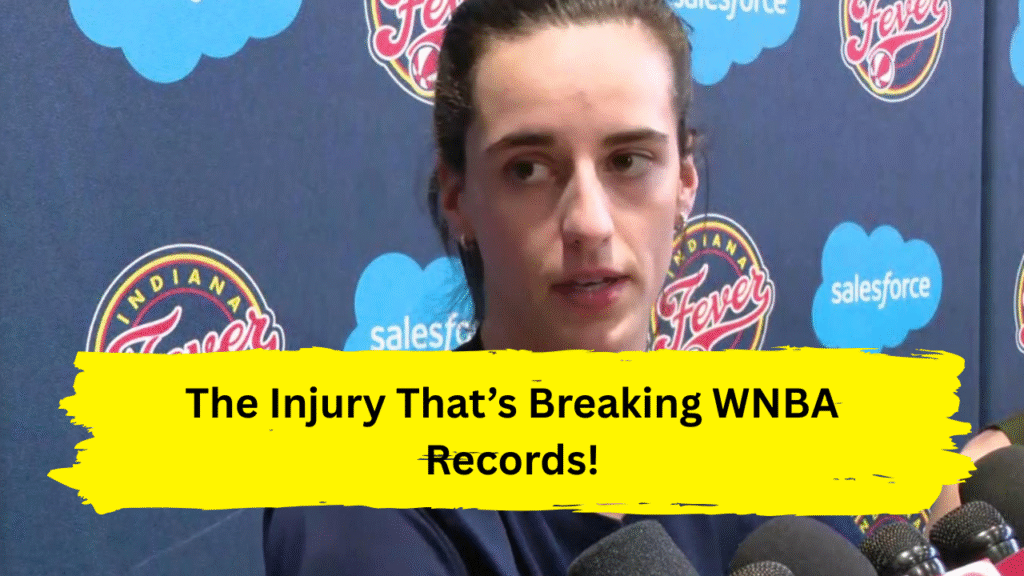
Caitlin Clark’s quad strain isn’t just sidelining a superstar—it’s exposing the WNBA’s seismic shift in economics, fandom, and cultural gravity. Discover how one injury is shattering records off the court and why her comeback could rewrite the league’s future. Dive into the ripple effects of this unprecedented moment!
The Unseen Earthquake
You know a player is transcendent when their absence becomes bigger news than most players’ highlights. That’s the paradox gripping the WNBA right now as Caitlin Clark, the Indiana Fever’s electrifying guard, nurses a left quad strain. On May 24, during a game against the New York Liberty, Clark felt a twinge in her quad but played through it, masked by adrenaline . Days later, an MRI confirmed the worst: a strain requiring a minimum two-week hiatus . But this isn’t just another injury report—it’s a tectonic event exposing how deeply one athlete is reshaping an entire league.
Anatomy of an Injury
Clark’s quad strain is a story of resilience meeting vulnerability. She’d battled left leg tightness in preseason but insists this is a “new, separate injury” . For a player who never missed a game in college (139 straight at Iowa) and opened her WNBA career with 44 consecutive appearances, this is foreign territory . “I’ve never been a patient person,” Clark admitted, describing rehab as a mental test . Her routine now involves daily therapy, sideline coaching, and shooting drills—all while resisting the urge to rush back. “It’s just not worth it,” she reiterated, though Tuesday’s game against Atlanta dangles as a tentative return target .
The Fever’s Fading Pulse
Without Clark, Indiana isn’t just missing 19 points, 6 rebounds, and 9.3 assists per game . They’re losing their offensive compass. In her absence, the Fever stumbled to a 1-2 record, including a baffling loss to the then-winless Connecticut Sun . Coach Stephanie White urged the team to “find an identity” sans Clark, but the gaps are glaring. Ball movement stutters. Pace dips. Defensive cohesion frays . Even DeWanna Bonner’s 21-point effort against Washington couldn’t mask the hole . As Clark observed from the bench, “Things aren’t going to be perfect… We’re playing a little bit different” . That’s an understatement.
The Economic Earthquake
Here’s where Caitlin Clark’s quad strain morphs from sports news into a case study in star power economics:
- Ticket Prices Implode: When Clark sits, markets tremble. The Fever-Sky game saw average prices nosedive 71%, from $86 to $25. Overall, Fever tickets plummeted from $137 to $80—a 47% freefall .
- Viewership Vanishes: NBA TV’s broadcast of Fever-Mystics drew just 357,000 viewers without Clark. Eight days prior, with her playing, it hit 581,000 .
- Betting Flatlines: Caesars Sportsbook reported a 50% drop in Fever game wagers. Fanatics saw “a downturn in WNBA handle” as Clark’s prop bets—once the league’s most popular—went dormant .
One fan, John Kopecky, canceled a cross-state trip to see Chicago play Indiana, bluntly stating, “She’s the biggest draw. That’s who the girls want to see” .
The League’s Uncomfortable Truth
The WNBA knew Clark moved needles, but her injury exposed their dependency. Analyst Rachel DeMita captured the sentiment: “Fans say they don’t wanna watch games if she isn’t there” . Teams like Washington relocated Fever games to arenas triple their usual size, banking on Clark’s appeal . Now, those bets look riskier. The league, riding a “billion-dollar revenue projection” tied to her cultural gravity, faces a stress test: Can it sustain momentum when one injury triggers double-digit economic dips?
Silver Linings and Sideline Growth
Yet Clark’s time off isn’t wasted. She’s turned observer, studying games beside coaches as a “connector” between staff and players . “It’s taught me a lot,” she said. “You learn by watching” . Teammates, meanwhile, confront a sink-or-swim moment. Aari McDonald, signed via hardship contract, exemplifies the scramble for depth . And Clark’s patience—forcing her to “find perspective” and “be a good teammate”—could forge a more resilient leader .
The Comeback Trail
As reevaluation looms this weekend, whispers swirl about a June 10 return against Atlanta . But Clark is wisely hedging: “It could be a possibility, but I could also not be available” . The Fever’s schedule offers no favors, with Atlanta and New York (the league’s top teams) awaiting . Rushing back risks reinjury, especially with a prior quad issue lingering . For a player whose passes rewrite geometry and logo threes break spirits, the smart play is waiting. But the league—and its balance sheets—ache for her return.
The Record No One Wanted
Caitlin Clark’s quad strain didn’t just sideline a phenom. It shattered records the WNBA never aimed to set: steepest viewership drop, sharpest ticket collapse, fastest betting fade. Her injury proved Clark isn’t merely a player; she’s an ecosystem. As the Fever navigate her absence, one truth crystallizes: The WNBA’s meteoric rise isn’t a tide lifting all boats. It’s a wave powered by singular stars—and when they falter, the entire shore shifts. Clark’s return will be seismic, but her injury’s legacy is already written: a stark, unforgettable lesson in the economics of star power.
P.S. The Caitlin Effect isn’t just real—it’s rewriting the rules. When she steps back on the court, you’ll want to witness the reset. Keep your eyes on Indiana. The comeback starts now.
Also Read: Latest Trending News

